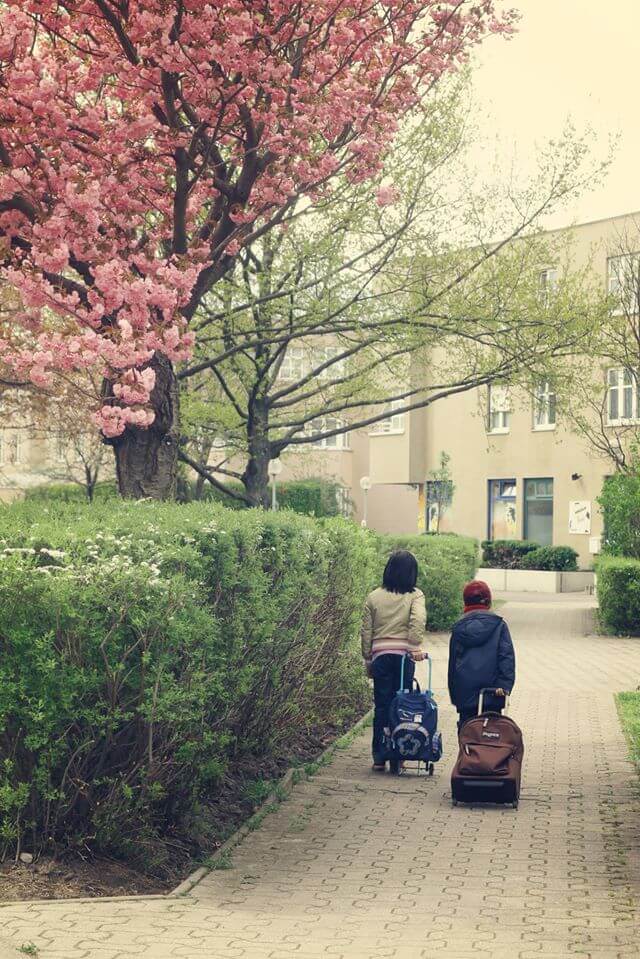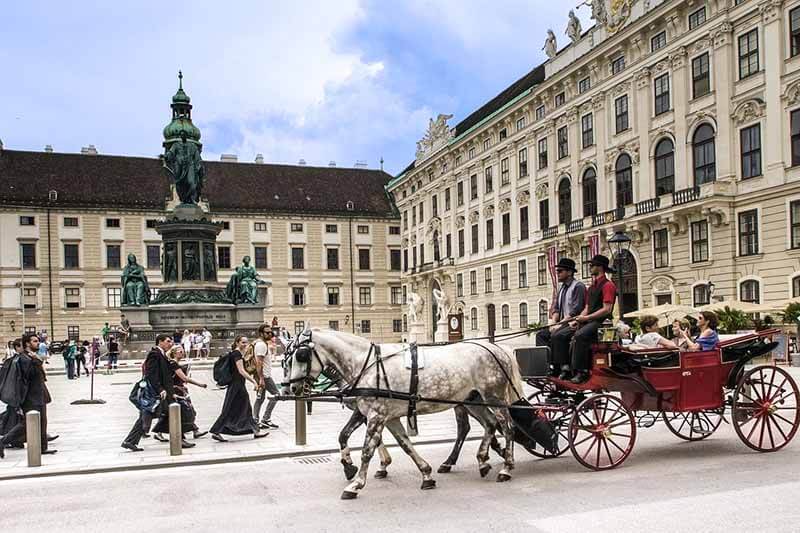.jpeg)
The Griechenbeisl is one of the oldest restaurants in Vienna, with origins dating back to 1447, making it not only a significant culinary institution but also a living piece of history. In its earliest days, the establishment was a humble tavern located near the Fleischmarkt (Meat Market), a bustling center of trade and commerce in medieval Vienna. The name “Griechenbeisl” itself, which translates to “Greek Tavern,” reflects the area’s historical connection to Greek merchants and traders who were active in Vienna’s economic life. It is located a stone’s throw away from Vienna’s oldest street, the Griechengasse.
Today, the Griechenbeisl isn’t merely a restaurant—it is a living museum of Vienna’s history. Visitors are not only served traditional Viennese cuisine but are also offered an opportunity to step into a space where centuries of stories and traditions are preserved with care and reverence. It remains a symbol of Vienna’s enduring charm, a place where the past and present blend seamlessly over fine food, rich wines, and the timeless spirit of hospitality.
Table of Contents
A Hub for Traders and Travelers
In its formative years, the Griechenbeisl primarily catered to traders, travelers, and merchants journeying along the important trade routes that intersected in Vienna. At the time, the city was a key crossroads between the East and West, making it a melting pot of different cultures, languages, and traditions. The tavern became a natural gathering point for weary travelers seeking a warm meal, fine wine, and a place to rest.
Beyond food and drink, the tavern became a center of social interaction and cultural exchange. Travelers shared tales of distant lands, news from their homelands, and insights into different customs and practices. Deals were brokered, friendships were forged, and knowledge was exchanged over mugs of beer and hearty plates of food. The tavern was not just a place to dine—it was a microcosm of Vienna’s vibrant cosmopolitan identity.
—
Throughout its long and storied history, the Griechenbeisl has been a silent witness to some of Vienna’s most significant historical moments, standing resilient through wars, sieges, and cultural renaissances. Its walls, steeped in centuries of stories, have absorbed the echoes of countless conversations, celebrations, and whispered secrets that tell the tale of a city at the crossroads of European history.
The Ottoman Sieges: A Refuge in Turbulent Times
During the Ottoman sieges of Vienna in the 16th and 17th centuries—first in 1529 and later in 1683—the Griechenbeisl played a role far beyond that of a simple tavern. As Ottoman forces laid siege to the city, the restaurant became a refuge for citizens seeking safety, shelter, and solidarity. Beneath its ancient vaulted ceilings and behind its thick stone walls, townspeople, traders, and soldiers would gather to seek solace in the familiar comforts of food, drink, and companionship.
The tavern also served as a strategic meeting point, where messengers and city defenders exchanged critical information and planned defensive strategies. Stories persist of soldiers sharing their last hearty meal at the Griechenbeisl before marching off to defend the city walls. The survival of the tavern through such destructive conflicts is a testament to its solid construction, historical importance, and the determination of those who preserved it.
Vienna’s Golden Age: A Cultural Hotspot
As the turmoil of sieges gave way to peace and prosperity, the 18th and 19th centuries ushered in Vienna’s Golden Age of music, art, and intellectual thought. During this transformative period, the Griechenbeisl became more than just a restaurant—it became a hub for cultural exchange and creativity.
The tavern was frequented by some of the greatest minds and artists of the time. Composers such as Wolfgang Amadeus Mozart, Ludwig van Beethoven, and Franz Schubert were known to have dined here, finding inspiration and camaraderie in its warm and convivial atmosphere. The restaurant also welcomed literary giants such as Mark Twain and Franz Grillparzer, who undoubtedly found comfort in the timeless charm of the tavern while discussing their ideas and philosophies over fine Austrian wine.Many of these iconic figures have left their mark in the form of signatures on the walls of the famous “Mark Twain Room,” a tradition that continues to captivate visitors.
It wasn’t just a space for quiet reflection; the Griechenbeisl was alive with music, laughter, and lively debates. Musicians would sometimes perform impromptu pieces, while poets recited their latest works to the applause of fellow patrons. The tavern became an unofficial salon for Vienna’s intellectual elite, where art, philosophy, and politics were discussed late into the night.
A Timeless Legacy
During these golden years, the Griechenbeisl firmly established itself as a cultural institution. It wasn’t merely a place to eat; it was a living stage where history unfolded, where melodies composed over dinner became timeless symphonies, and where words spoken over wine became immortal lines of literature.
Even as Vienna underwent rapid modernization in the 20th century, the Griechenbeisl maintained its commitment to preserving the spirit of its golden age. The restaurant’s walls, adorned with signatures of historical figures, serve as a reminder of the luminaries who once walked through its doors.
Today, the Griechenbeisl stands not only as a celebrated dining establishment but also as a testament to Vienna’s resilience, cultural brilliance, and timeless charm. Visitors who step through its historic doors are not just entering a restaurant—they are walking into a living chapter of Vienna’s history, where every corner tells a story and every meal carries with it the weight of centuries past.
Preserving the Spirit of the Past
Despite the passing of centuries, the Griechenbeisl has remained remarkably authentic and true to its roots. Its stone archways, wood-paneled rooms, antique furnishings, and softly glowing lanterns transport visitors back to medieval Vienna. Each room within the restaurant tells a story, from the cozy Biedermeier Room to the vaulted cellar spaces, where one can almost hear the echoes of lively conversations from centuries past.
Food to Try
Starters:
- Grießnockerlsuppe (Semolina Dumpling Soup)
- A comforting soup with light, fluffy semolina dumplings in a clear broth.
- Beef Tartar
- Finely minced beef, seasoned and served with traditional accompaniments like capers, onions, and toast.
Main Courses:
- Wiener Schnitzel
- The classic breaded and fried veal or pork schnitzel, served with parsley potatoes and lingonberry sauce.
- Tafelspitz
- A quintessential Viennese dish of boiled beef, served with apple-horseradish sauce, chive sauce, and Rösti (crispy potatoes).
- Zwiebelrostbraten (Onion Roast Beef)
- Tender beef steak topped with crispy fried onions, served with potatoes or noodles.
- Wild Game Specialties (Seasonal)
- If you’re visiting during game season, look for venison or wild boar dishes, often served with red cabbage and dumplings.
Desserts:
- Apfelstrudel (Apple Strudel)
- A must-try Austrian dessert made with thin pastry and spiced apple filling, served with vanilla sauce or whipped cream.
- Topfenstrudel (Cheese Strudel)
- A rich pastry filled with sweetened quark (fresh cheese), also often accompanied by vanilla sauce.
- Kaiserschmarrn
- Shredded caramelized pancakes with raisins, dusted with powdered sugar, and served with stewed plums.
Drinks:
- Pair your meal with a glass of Austrian wine or a local beer. The restaurant also offers a good selection of schnapps for an authentic finish to your meal.
.jpeg)
Griechenbeisl
Fleischmarkt 11, 1010 Wien
Monday to Sundays, 12–11 pm
How to get to Griechenbeisl
By Public Transportation:
Subway (U-Bahn):
-
- Take the U1 or U4 subway lines to Schwedenplatz station.
- Fleischmarkt is a short walk (approximately 3–5 minutes) from the station.
Tram:
-
- Take tram lines 1 or 2 to the Schwedenplatz stop.
Bus:
-
- The 2A bus line also stops at Schwedenplatz.
By Walking:
If you are already in the city center (Stephansplatz or nearby), Fleischmarkt is within a 10-minute walk. Head southeast toward Schwedenplatz.
By Taxi or Ride-Share:
Taxis or ride-share services like Uber can easily take you to the address. Mention “Fleischmarkt 11 near Schwedenplatz” for clarity.
By Car:
Enter “Fleischmarkt 11, 1010 Vienna” into your GPS or navigation app. Be mindful that parking in the city center can be limited. Nearby parking garages include:
-
- Schwedenplatz Garage
- Parkgarage Franz-Josefs-Kai
--------------------------Book your Vienna stay here!--------------------------

.jpeg)

.jpg)


Leave a Reply